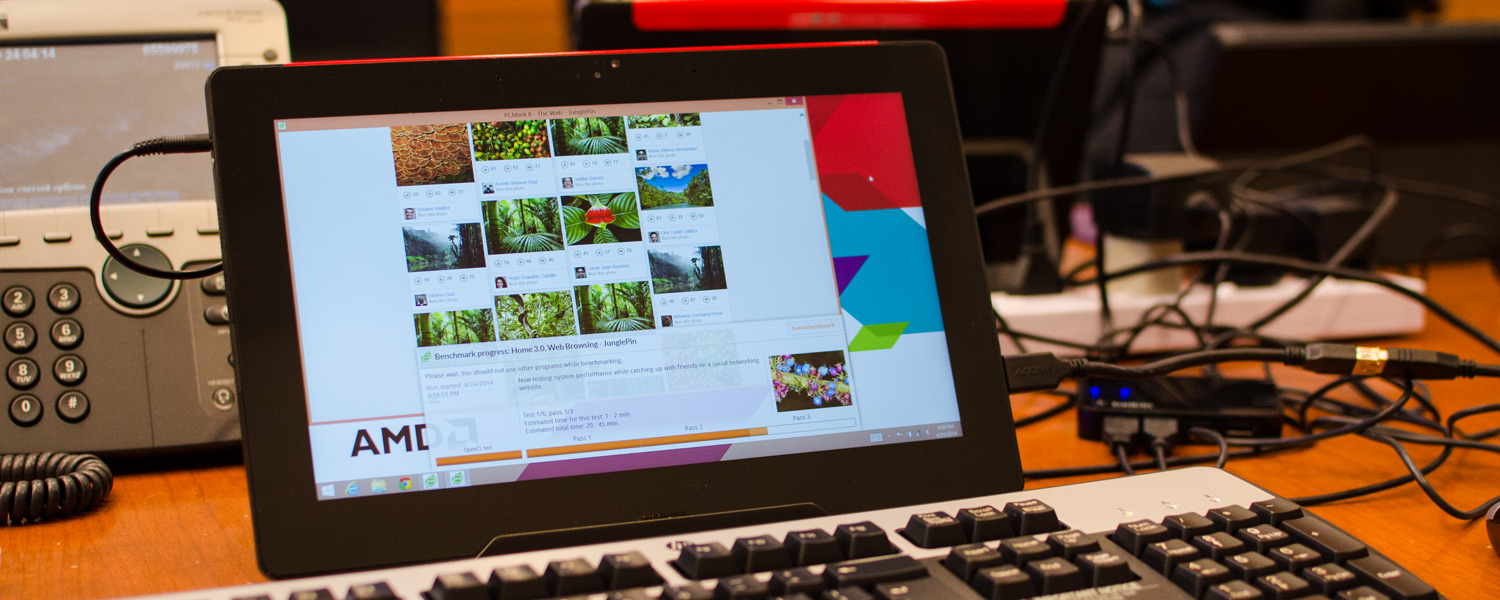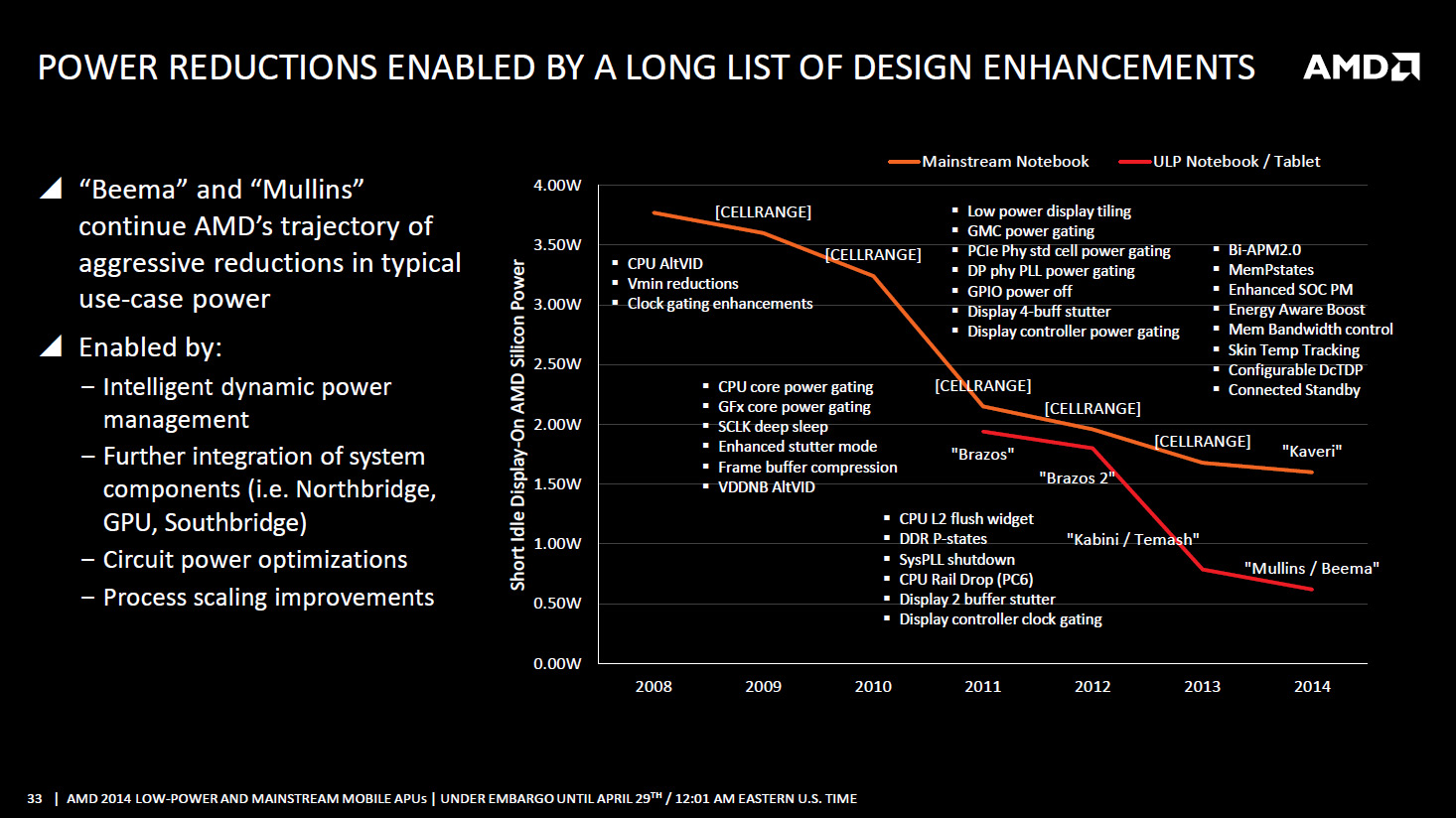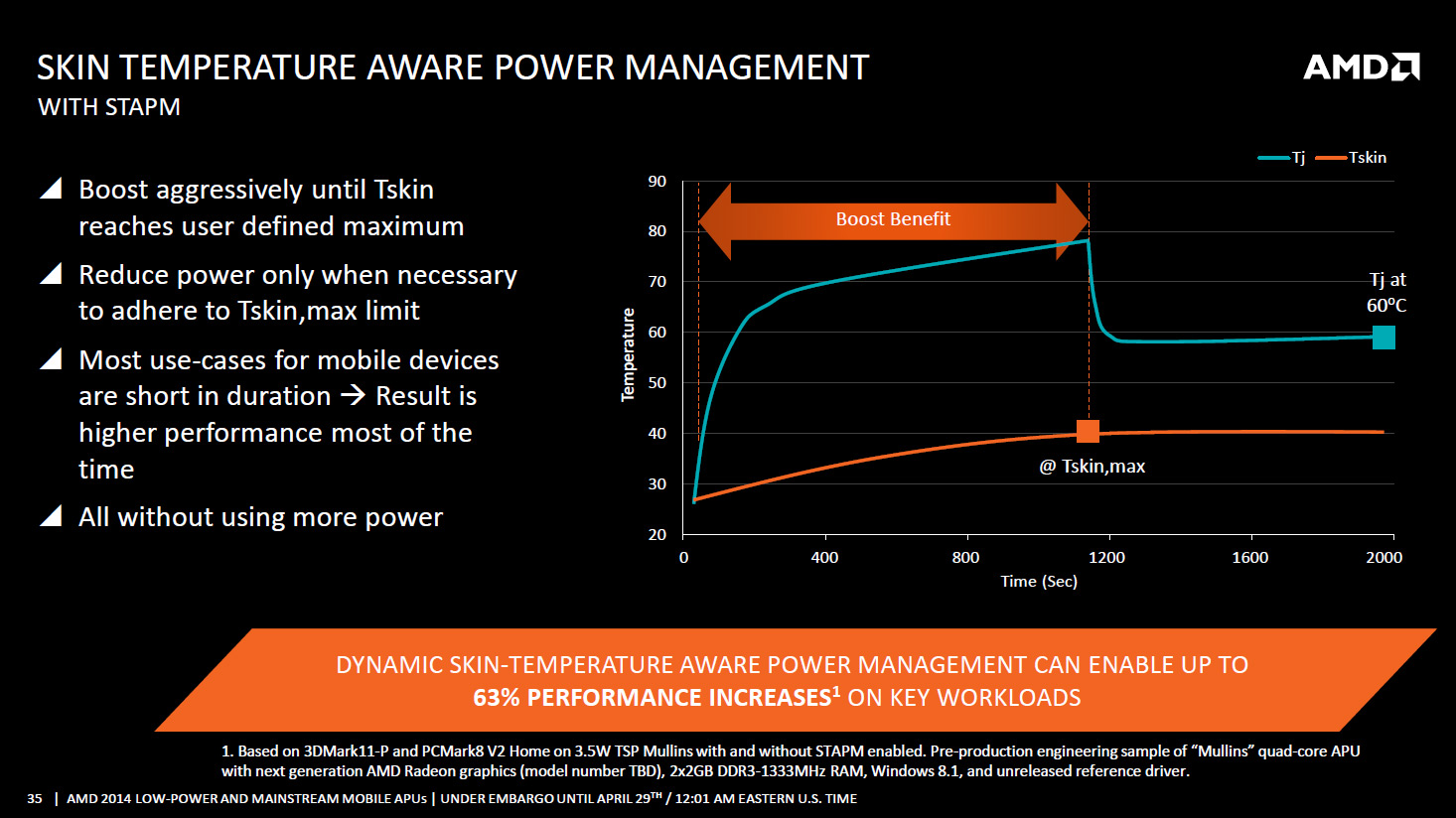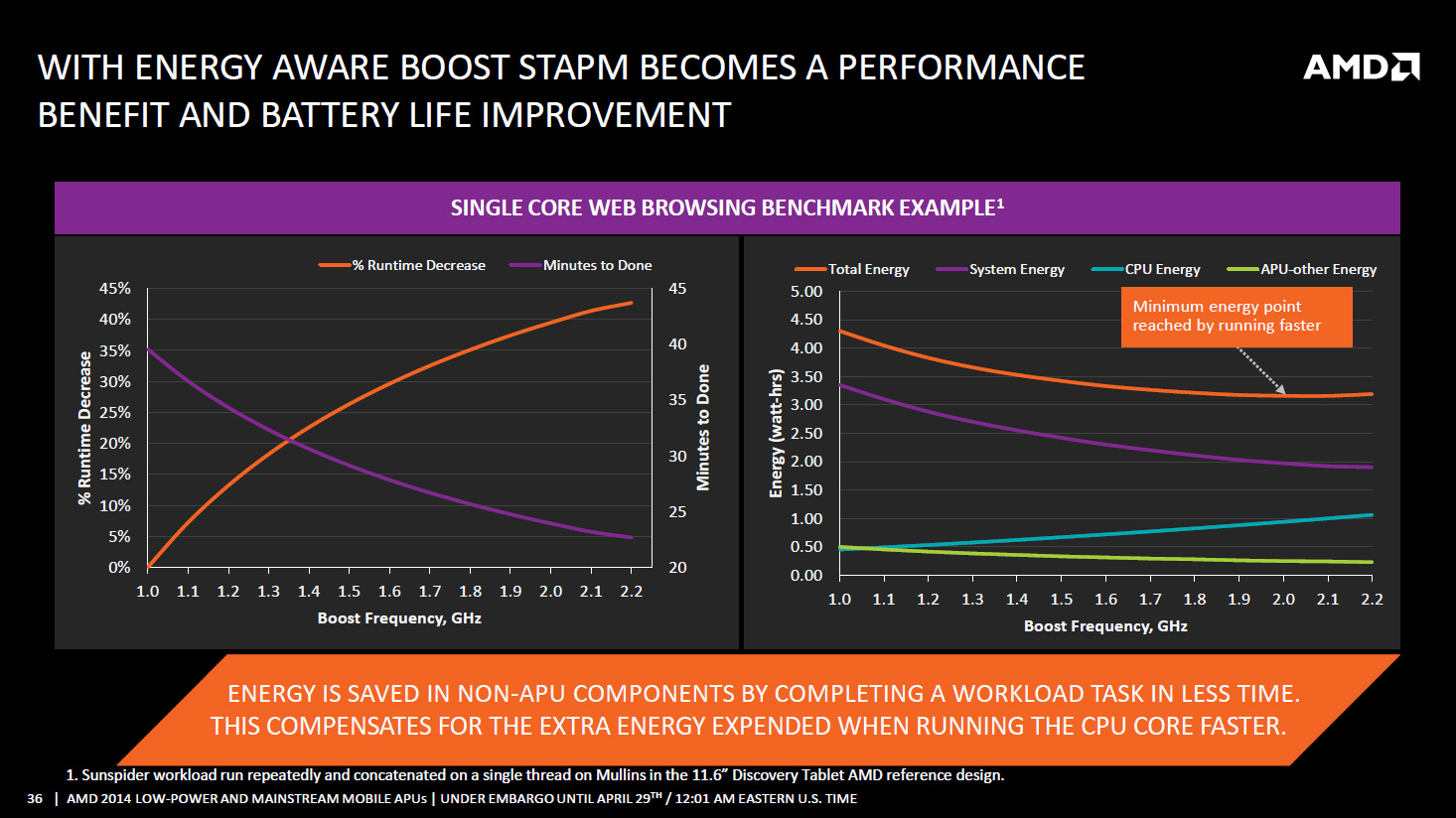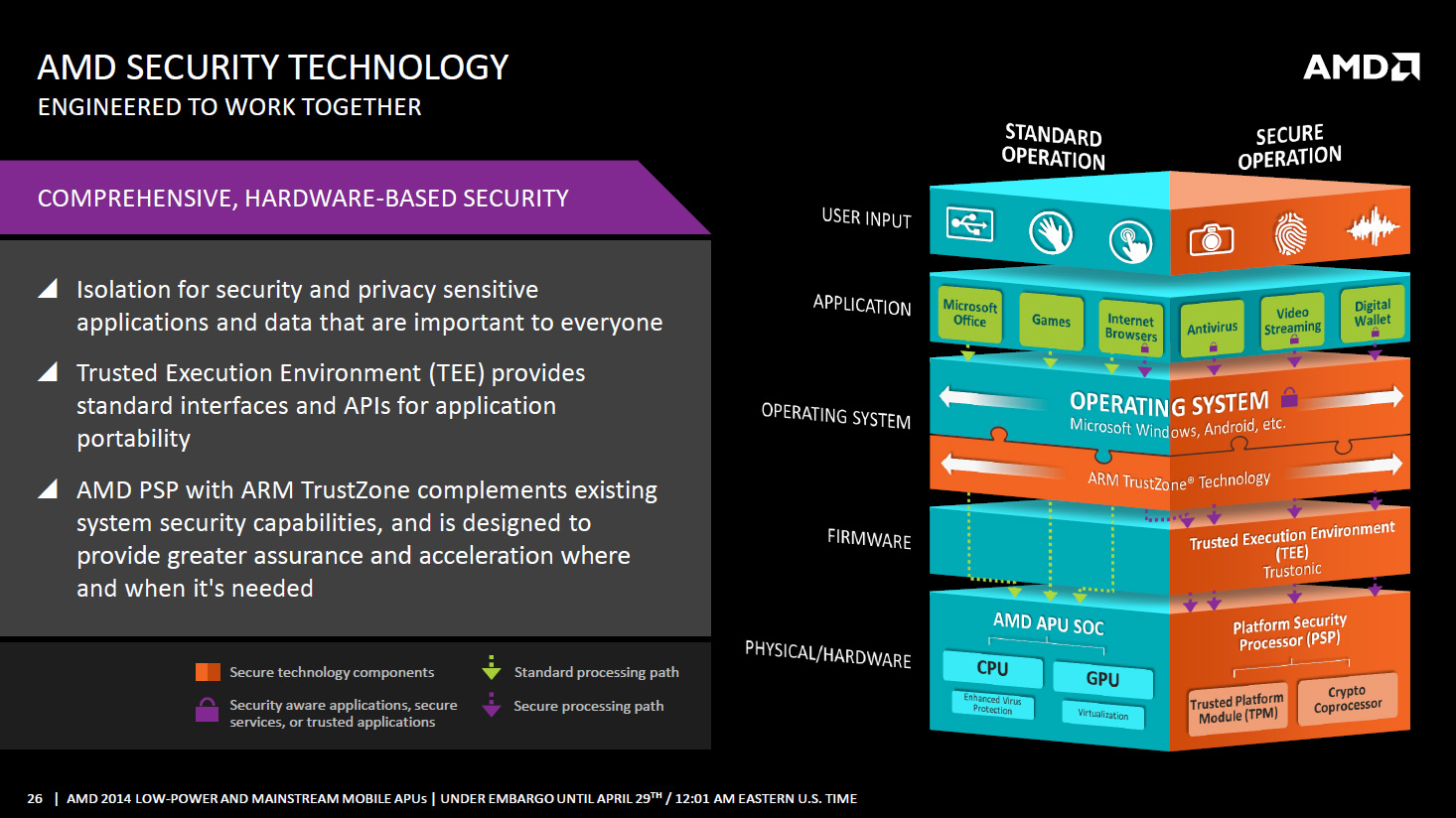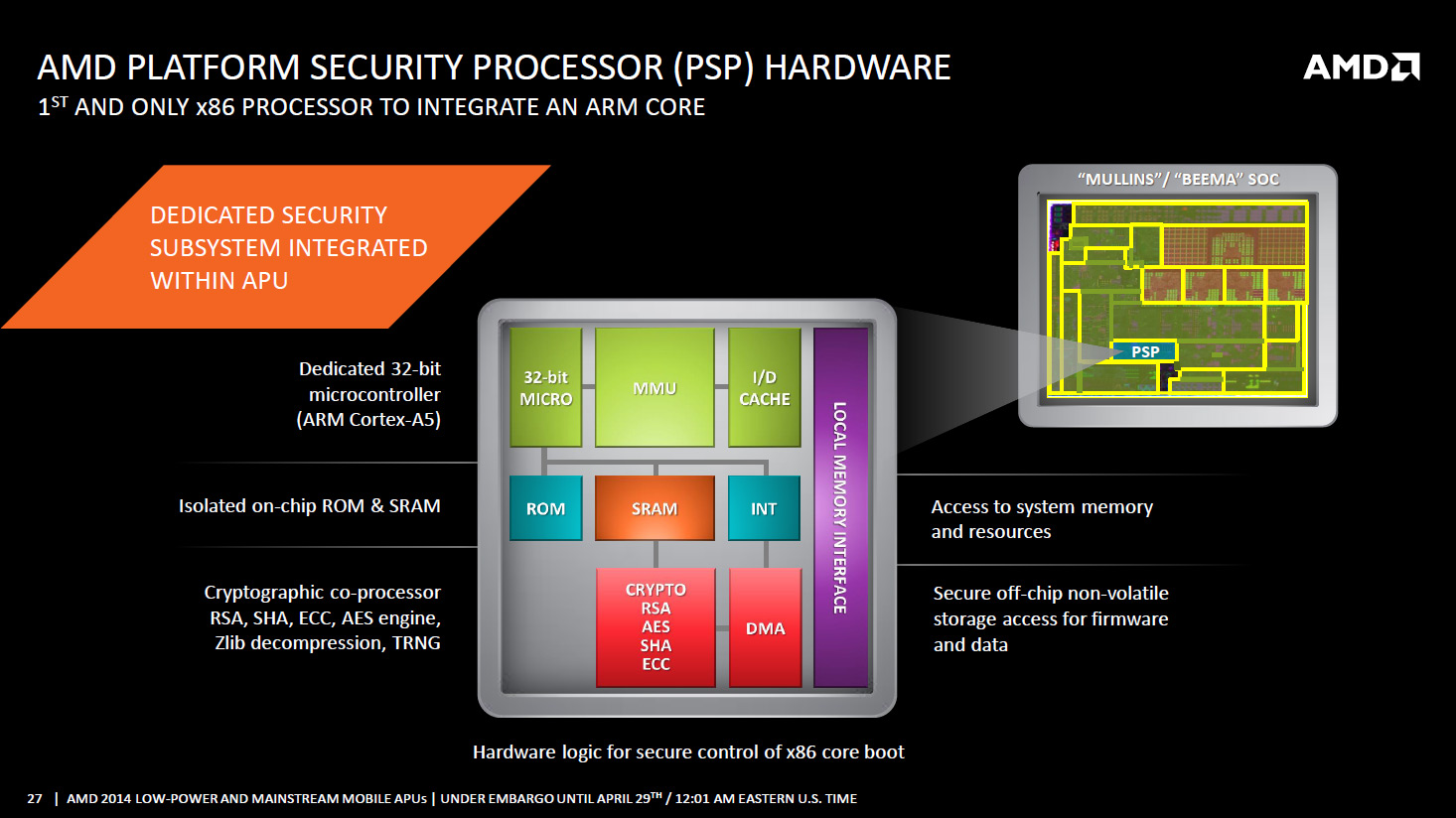Beema & Mullins Features: STAPM, Security, Gestures
Aside from reducing CPU and GPU power leakage by 19% and 39% respectively, one of the major ways AMD has been able to improve performance and energy efficiency simultaneously is through Skin Temperature Aware Power Management, or STAPM.
In a typical tablet or notebook the manufacturer codes in an SoC temperature limit that, when reached as determined by the on-die sensor, can be sustained without the body (or skin) of the device becoming uncomfortable to hold. This limit is often around 60°C, which would keep the unit's body around 40°C. Based on the limit, the SoC is configured to run at a maximum power level that won't exceed it.
AMD realizes that the most important temperature measurement isn't the SoC, which never comes in direct contact with the user, but the device's case. If the temperature of the case could be measured, the SoC - in this case AMD's Beema or Mullins APU - could be managed more intelligently on a power level. This is where STAPM comes in.
STAPM is a unique way to measure the temperature of a system and throttle/boost the APU accordingly. When the device's case temperature is measured to be lower than an acceptable level, STAPM will boost the APU's power, as a result raising its temperature and performance levels. As soon as the case temperature reaches the limit, the APU will scale back to standard power levels which can be sustained without the case burning a user.
The graph AMD provided shows the APU running as high as 78°C in a boosted, higher performance state for 18 minutes before dropping back to avoid overheating the case. Many tasks on a tablet only require maximum performance from the SoC in short bursts, so being able to boost power means tasks can be completed more quickly. It may not be immediately intuitive, but it also saves energy by being able to enter a low power state more quickly.
Alongside STAPM, Beema and Mullins include Intelligent Boost Control, which measures how well an application performs relative to a clock speed increase. If an app benefits greatly as clock speeds increase, the APU will boost for these apps. On the other hand, if clock speed increases do little to speed up a different task, the APU won't be boosted.
Out of all the features AMD listed in Beema and Mullins, I'm most excited about what they're doing in the power management and boost space. STAPM seems like an advanced way of getting the most out of the APU within thermal limits, while conserving energy by having tasks complete more quickly. Unlike a desktop PC, tablets and laptops aren't normally used for sustained loads, which is why they seem so well suited to these improvements.
With that said, STAPM could introduce issues when users are gaming for extended periods. It's possible that, 25 minutes in to a gaming session, the APU cuts off boost, causing a drop in performance. If you've calibrated the game's settings to run at the maximum quality levels possible at boosted levels of performance, stutter may be introduced when boost is cut.
But if STAPM and other boost controls can be used to improve performance and battery life overall, AMD might have winning x86 SoCs, especially for tablets with Mullins.
If you were wondering, like I was, how the skin/case temperature is measured for STAPM, AMD confirmed it doesn't make use of a sensor directly on the case as this would increase manufacturing costs for OEMs. Instead, STAPM uses a highly complex estimation algorithm that collects data from all sorts of internal hardware - including the APU itself, display, battery, and other chips - to measure the temperature. OEMs would calibrate this against direct measuring devices like a thermal camera to ensure estimations are correct.
Another big feature in Beema and Mullins that AMD has been touting is the Platform Security Processor (PSP). These new APUs are the first x86-based SoCs to integrate a dedicated ARM core, a single 32-bit ARM Cortex-A5, for security processing. The ARM core is paired with isolated ROM, SRAM and a cryptography co-processor, ensuring any tasks given to the PSP subsystem can't be accessed maliciously.
The PSP uses ARM TrustZone technology, which is a standards-based security approach that allows applications to offload security-based tasks to the hardware security processor. Encrypting a password or processing a fingerprint, for example, can be passed through the TrustZone to the firmware's Trusted Execution Environment, where the PSP performs and accelerates the tasks in a totally secure environment.
With all sorts of malicious attacks occurring on an increasingly frequent basis, AMD has recognized there's a need for some form of hardware-level security. Whether or not the PSP gets used will be up to software developers and the various key companies in the security business, but the hardware is there and ready for action in Beema and Mullins.
Many of AMD's software features can be accelerated on Beema and Mullins, including Gesture Control, Face Login, Quick Stream, Perfect Picture, Steady Video, and Android apps through BlueStacks.
I used Gesture Control on the Discovery reference tablet powered by Mullins, and the various in-air hand controls are certainly cool and will be handy in situations where you can't use the display, like when you're cooking in the kitchen. However this is one of those features that seems a bit gimmicky, and I'm not sure it'll be used aside from the occasional demonstration to mates.
